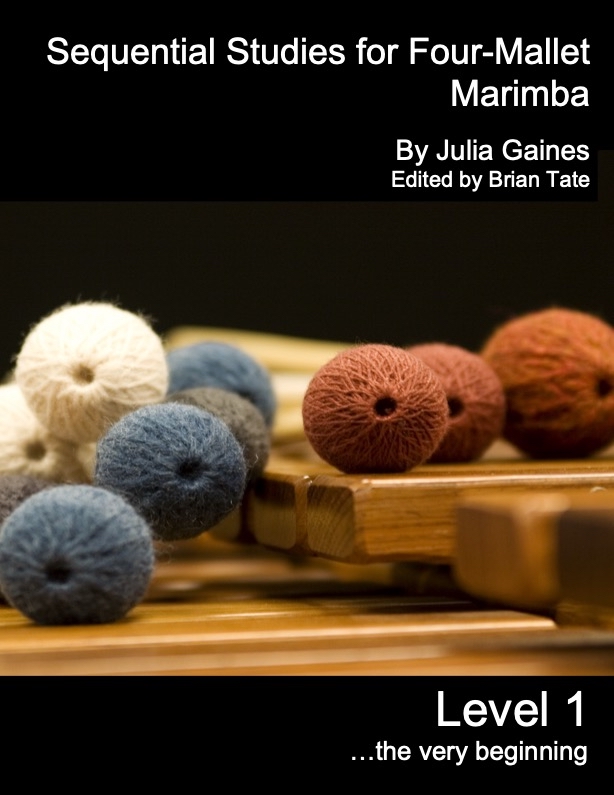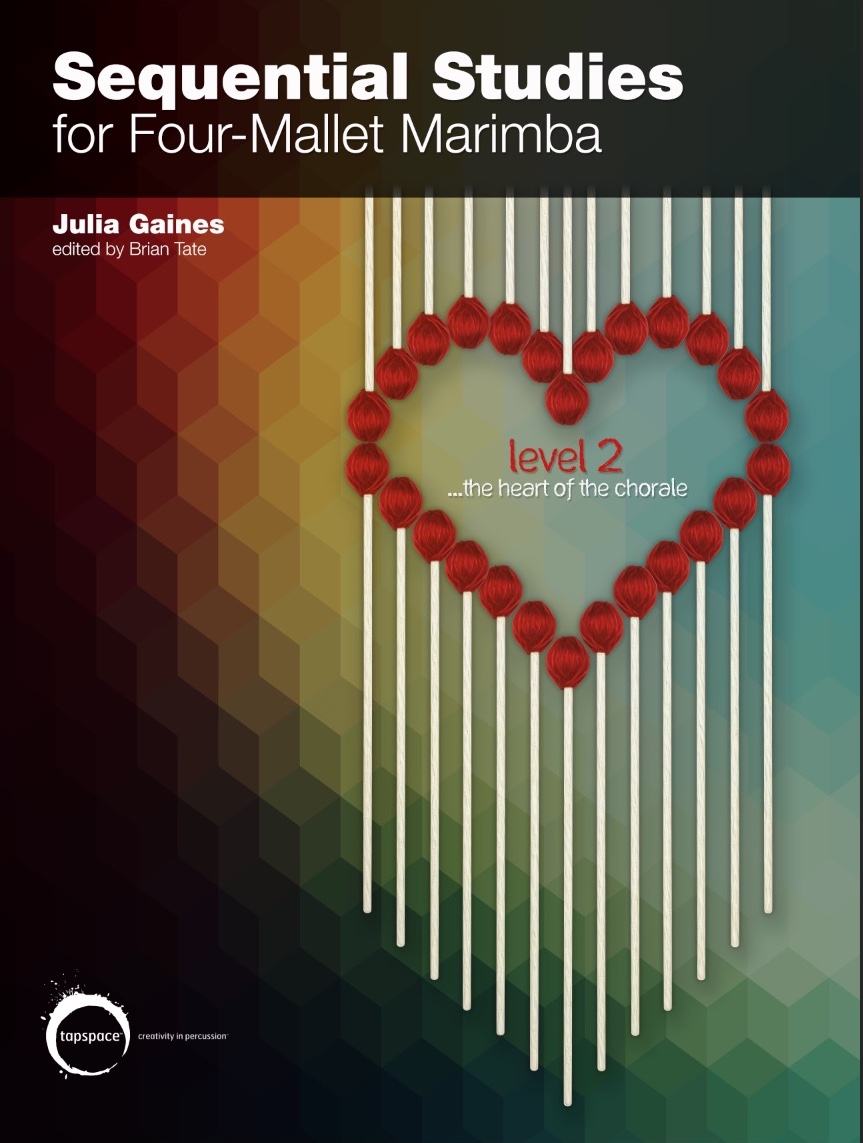Julia Gaines-Montag

Dr. Julia Gaines-Montag is the author of the series Sequential Studies for Four-Mallet Marimba. The series published by Tapspace includes three books with twenty lessons each that break down the strokes involved in four-mallet marimba literature. She also has a solo recording, Tiger Dance, that includes recordings of some of the intermediate solos included in these books in addition to other works she has commissioned.
Julia has performed as a soloist throughout the United States and in several countries including Brazil, China, England, and Russia. She has performed in the percussion sections of the Missouri Symphony, the Oklahoma City Philharmonic, the Fox Valley Symphony, the Green Bay Symphony, and the Idaho-Washington Symphony. She has given many clinics at conferences throughout her career as a percussionist including Midwest 2013, 2025 and PASIC 2004, 2008, 2013, and 2019. Her three percussion performance degrees come from the Lawrence Conservatory of Music (BM), the Eastman School of Music (MM and performer's certificate) and the University of Oklahoma (DMA).
Dr. Gaines-Montag is a long-time member of the Percussive Arts Society and has served in several leadership positions for the organization including Secretary of the Executive Committee and Associate Editor of Percussive Notes. She has worked at the University of Missouri for thirty years where she began as the Director of Percussion Studies. She became the Director of the School of Music in 2014 and led the school for nearly a decade. Some highlights from her administrative career include spearheading the School of Music’s Centennial Celebration and serving as the point person for the design, construction, and grand opening of the Sinquefield Music Center.
"Let's start at the very beginning, a very good place to start." Sound of Music
Unfortunately, many of today's beginning marimbists do not start here. This book is the first in a series that will attempt to organize a huge amount of information about marimba pedagogy into a structured learning sequence. Dr. Gaines has spent four years researching hundreds of four-mallet marimba pieces to uncover what techniques and musical attributes were common at the prescribed "beginning, intermediate, and advanced" levels. Her Performance Level System separates those broad labels into ten different categories of literature. Each method book is designed to help prepare the student for literature performance at that level. A partial list of literature at each level is listed at the end of each respective method book.
This book is the second in a series designed to take the beginning marimbist through sequenced, pedagogical steps for learning four-mallet technique and literature. With the help of the internet, too many young players just jump right into advanced literature because it looks or sounds fun. This can lead to injury, frustration, and bad musicianship. If you have not worked through Level 1 of this series, it is highly recommended that you do so before starting Level 2. They are designed to work in a sequence, and the techniques learned in Level 1 are assumed in Level 2.
Dr. Gaines spent several years researching hundreds of four-mallet marimba pieces to uncover what techniques and musical attributes were common at the prescribed “beginning, intermediate, and advanced” levels. Her “Performance Level System” separates those broad labels into ten different categories of literature. Each method book is designed to help prepare the student for literature performance at that level. A partial list of literature at each level is listed at the end of each respective method book.
This book is the third in a series designed to take the beginning marimbist through sequenced, pedagogical steps for learning four-mallet technique and literature. With the help of the internet, too many beginning players jump into advanced literature because it looks or sounds fun. This can lead to injury, frustration, and bad musicianship. If you have not worked through Level 1 and 2 of this series, it is highly recommended that you do so before starting Level 3. They are designed to work in sequence, and the techniques learned in Level 1 and 2 are assumed in Level 3.
As an overview, Level 1 focuses on double vertical and single independent strokes and does not contain an interval over an octave. Level 2 focuses on hand to hand rolls and introduces the single alternating stroke and intervals of an octave. Level 3 focuses on lateral strokes including the double lateral and triple strokes. There is also an introduction to combination strokes which occurs where two different strokes appear in one hand without interruption.
This recording includes pieces Dr. Gaines has commissioned in addition to others. Works included are:
Echoes by Kevin Bobo (commissioned by Dr. Gaines)
Hannah's Waltz by Ricardo Souza (from Sequential Studies, Level 1)
Lifting Spirits by Tracy Thomas (from Sequential Studies, Level 1)
2+1 by Ivan Trevino
Lost Mountain Sunrise by Blake Tyson (commission by Dr. Gaines)
Tiger Dance by Jeffrey Dennis Smith
...ascends the sky by Dave Hall
C:M by Thomas McKenney
Watcher of the Skies by Tracy Thomas (from Sequential Studies, Level 2)
Remember Belem by Ricardo A. Coelho de Souza
The Lord's Prayer arr. Julia Gaines


